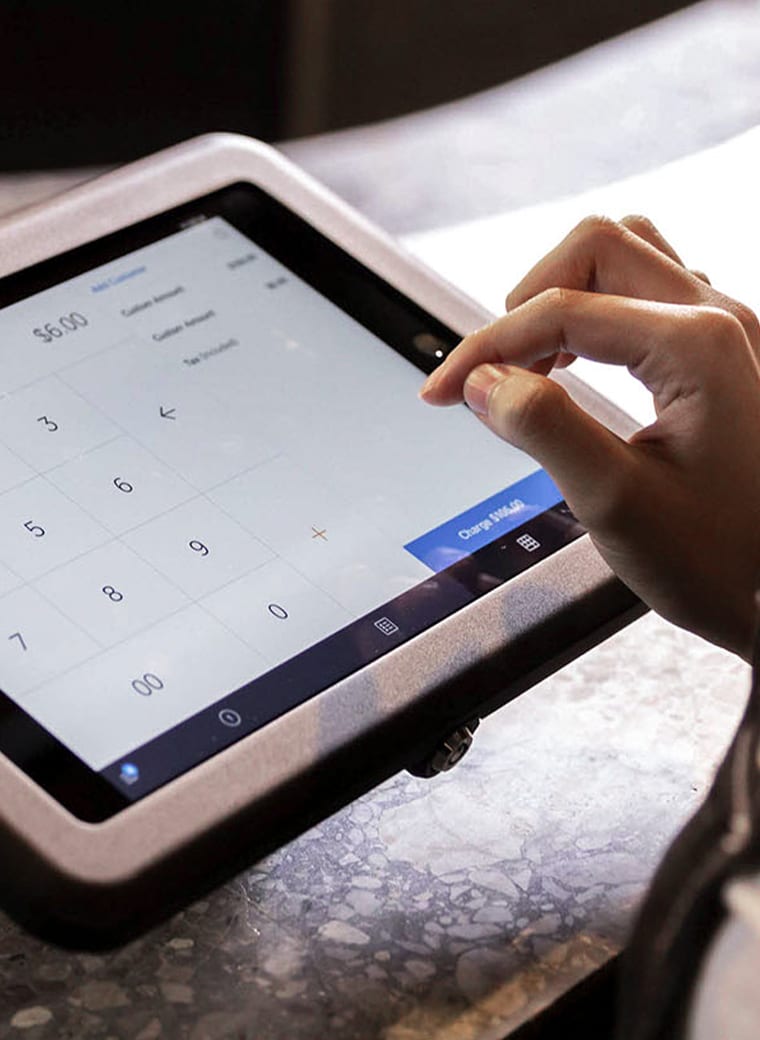iPad
Even the base model iPad is suited to mobile Point of Sale, but if you’re looking for increased speed, consider a recent model and ensure it has plenty of storage.
The number of iPads you require depends on where you intend to position them and how you plan to use them.
Typically, in a café or restaurant, you would find an iPad (or perhaps a couple) at the front counteracting as the cash register, multiple iPads throughout the restaurant as ‘stations’ where staff can place orders, an iPad at the bar for drinks orders, one in the kitchen, and additional mobile devices for tableside ordering.
Some restaurants also have a dedicated iPad for takeaway, allowing customers to input their own takeaway order.
Cash drawer
iPads acting as cash registers will need to connect to a cash drawer. This is most often a wireless connection via Bluetooth or perhaps Wi-Fi.
Payment processor
The payment processor is the dedicated hardware that allows your cash register to process card and digital wallet payments.
It generally also connects to the iPad POS wirelessly via Bluetooth or Wi-Fi. If you have multiple registers, such as one at the bar and one at the front counter, you will need multiple payment processors.
Docket printer
Docket printers are also connected wirelessly. They will need to be networked to each iPad so orders can be sent to the relevant area.
Restaurants generally have one in the kitchen and one at the bar, but if there are set areas within the kitchen for desserts, or light snacks, a docket printer in each of these areas is also a good idea.
The mPOS software then allows you to designate what docket printer an order is sent to (ie drinks orders to the bar, food orders to the kitchen, payment receipts to the cash register printer).
A router and internet access
One major feature of mPOS is that the data is not stored on a device but rather in the Cloud. That means reliable internet is a must as all your iPads will be networked together and updated in real-time.
